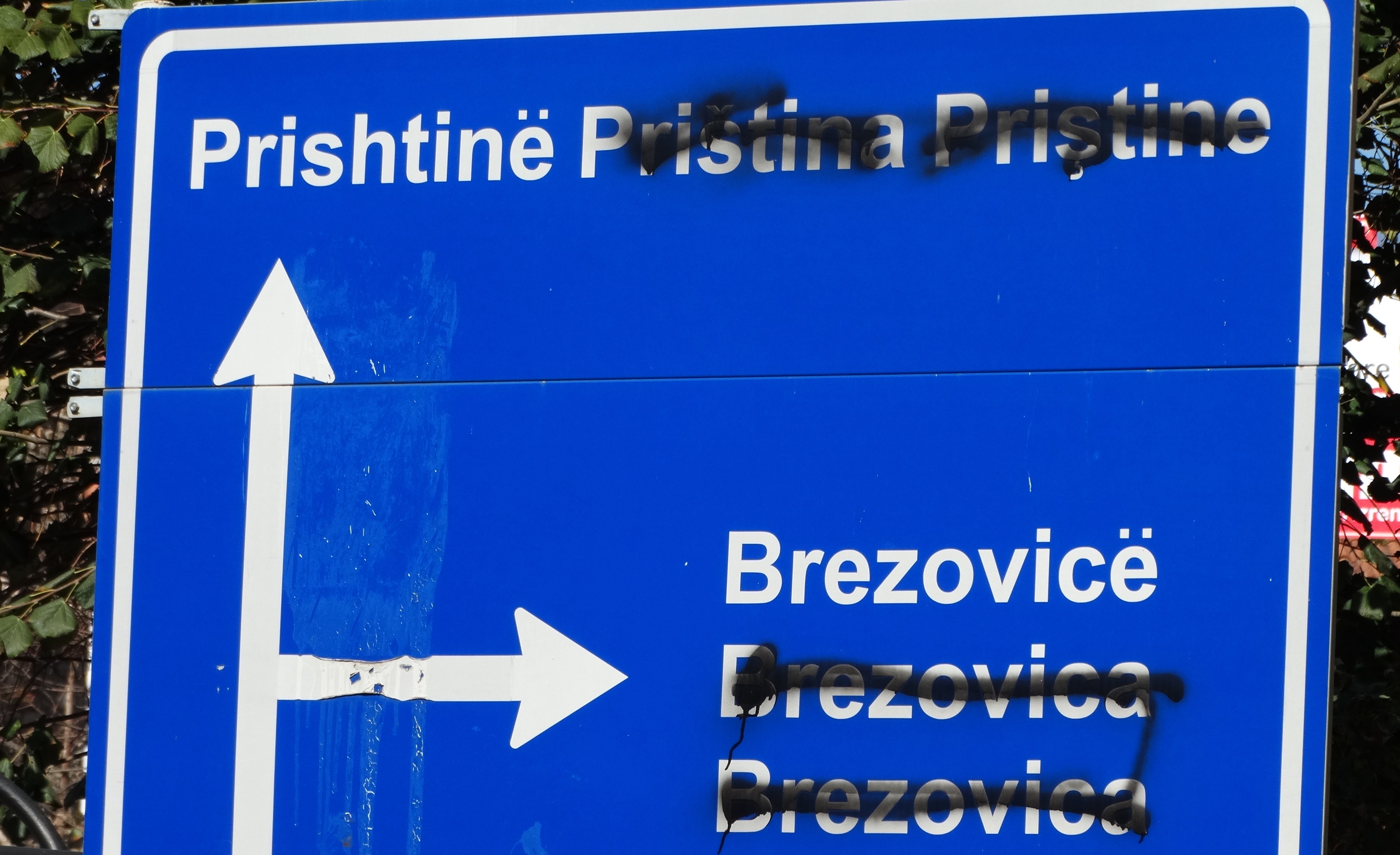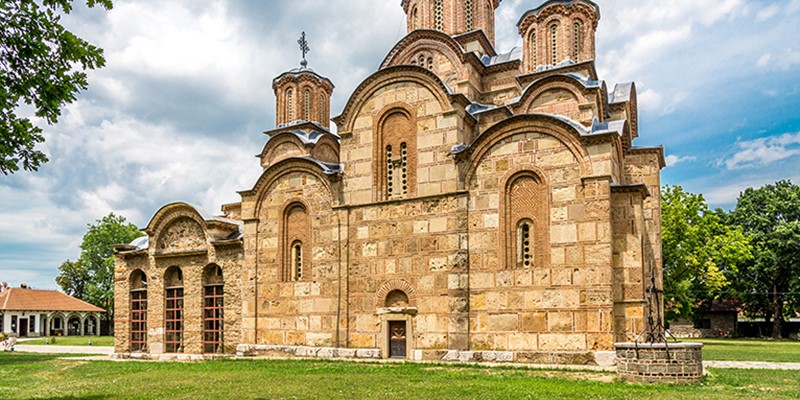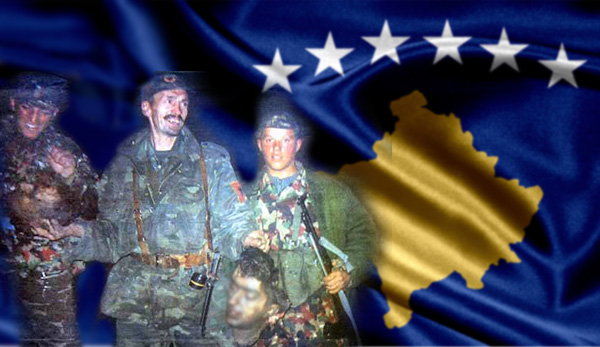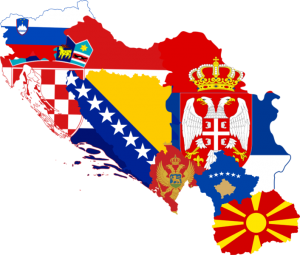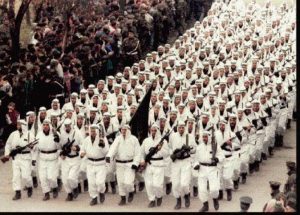
Views: 634
Southern Serbia’s autonomous province of Kosovo and Metochia (KosMet) has been subject to a gradual, but a permanent change of its demographic content during the time of Titoslavia (Socialist Yugoslavia, 1945−1991). Three principal factors were crucial to the drastic demographic change in this Serbian province in favor of ethnic (Muslim) Albanians and at the expense of ethnic (Christian Orthodox) Serbs and Montenegrins.
Demographic explosion
First and the most important has been the demographic explosion, due to the enormous birth rate of Albanians. In the situation when this trend on the global scale was in the opposite direction, with even African countries diminishing their birth rate, the only European regions with breeding out of all proportions, have been Albania and KosMet. In a comprehensive article in Newsweek,[1] entitled “Demographic Bomb Is No Longer As It Used To Be”, it has been estimated that by 2050 the only regions with more than 2 children per woman will be the Caribbean Islands, Pakistan, Eastern Guinea, and African countries (except for North and South Africa). And one region in Europe – KosMet.
Analyzing the world situation the author writes:
“If the figures are correct, they signify that almost half of the world population lives in the countries whose demographic regime is situated below the replacement level: comments Ebershtadt”.
Nevertheless, there are noticeable exceptions. In Europe, Albania and Kosovo make even more children. Asia has the pockets of the large natality, with Mongolia, Pakistan, and the Philippines. Saudi Arabia represents the birth rate largest in the world (5.7), after Palestinian Territories (5.9) and Yemen (7.2). However, some countries have some surprises in store: an Arab Muslim state Tunisia has fallen below the reproduction threshold.
It is noticed that during Titoslavia, the birthrate in Albania was noticeably lower than on KosMet. How to explain this, since in both regions ethnic Albanians constitute the overwhelming majority?
Albania is an independent state, responsible for her own well-being. The uncontrollable rise in population implies more hungry mouths, more unemployed, more public expenditures for social needs, etc. But what is unfavorable for a responsible, sovereign state appears favorable for the society which relies on the rest of the state it lives in. The more populous the ethnic minority is, the more convincing demands for financial and other supports are. The more children in the family, the less income per capita is, and again the more justifiable demands for public financial help. However, this can not continue ad infinitum, of course. Once the final goal has been achieved, the secession realized (in the case of KosMet in 1999), the logic takes the opposite direction – family planning. The logic: “make children in the evening and submit the bill to the state in the morning” does not work any longer, for this is your own state. That is exactly what is going on in present-day Albania.
Immigration from Albania & emigration to Central Serbia
Second, it was the influx (illegal) of ethnic Albanians from neighboring Albania into KosMet (and partially into Yugoslav Macedonia), both the migrant slow and steady and those termed as metanastatic movements. The first immigrant phenomenon appears slow and has effects which reveal along centuries, just like the high-rate natality effect. The second is noticeable and has profound psychological effects on the indigenous population, in this case, the Serbs and Montenegrins. It provokes massive moving out of the autochthonous inhabitants, mainly into Central Serbia. The rate of this migration deserves particular attention, for this reveals more than any of the political and demagogical “explanations”.
It has been noticed since this phenomenon has been observed and followed statistically that the rate of outflow migration appears constant in time. What does this fact signify? Central Serbia outnumbers the Serb population on KosMet by more than an order of magnitude. Equally, the area of Serbia is almost an order of magnitude larger than KosMet. Now, suppose that all Serbs (and non-Albanians, for that matter) were willing to quit KosMet (voting by feet, as some Western political commentators were eager to emphasize while describing emigration from Milošević’s Serbia), their number on KosMet would diminish exponentially, for the number of emigrants would depend solely on the number of the existing at the spot. However, the number of emigrants depends on the possibility of the external reservoir to absorb the influx, too. The constant rate of emigration means that Central Serbia can not absorb the immigrants all at once, but only gradually since its capacity is large but finite. That is, had Serbia been many times larger, the number of non-Albanians on KosMet would have been zero by now.
Suppression
Third, the question arises naturally, the question above questions, as legitimate as forbidden: Which kind of people were those “suppressed” on KosMet when the other population flees from them? Or put it in this way: Who was suppressing whom?
It is so far presented the global phenomena, as the general frame for the depopulation of KosMet from non-Albanians and overpopulation of the ethnic-Albanians (the Shqiptars as the Albanians are calling themselves). Now it has to be turned to the mechanism which is responsible for this effect as the third and probably the focal reason for the drastic demographic change in KosMet during the lifetime of Titoslavia – suppression. For the sake of clarity, it has to be distinguished two principal strategies, as used by the (newcomers) Albanians (Shqiptars) for taking over land and estate from the rest of KosMet (autochtonous) population – the Serbs and the Montenegrins (in fact, ethnolinguistic Serbs).
We start with quasi-violent tactics. In the villages with a mixed population, non-Albanian houses, or families, adjacent to Albanian ones, are living under constant pressure, even fear from their neighbors. Any conflict, however innocent, may easily pass into a dangerous one, regarding the nature of the Albanian ethos and their social units, tribe (fis) or otherwise. Since the members of the latter outnumber the former, and Albanians are, as a rule, well equipped with arms, ready to use them, the neighboring (non-Albanian) houses live in a permanent fear from eventual conflict and, therefore, the use of the arms by neighboring Albanians. The latter may arise for various reasons. Trespassing, livestock damages, “wrong look” at Albanian wife or daughter, etc., as the case in any rural community may arise. Any serious conflict may initiate a blood feud and this may be resolved by leaving the area only.[2] Whatever the surface outlook may be, the relationship between populations who do not share the same ethos and are endowed with a different mentality is anything, but relaxed. It is the neighborhood where jokes have no place, since the sensitivity of Albanians, even regarding their own compatriots, is pathologically pronounced. Many families, finding this environment unsupportable simply sell the estate and move away (in Serb case to Central Serbia).
If it is not found in the above example any bad intentions, the other causes of emigration are not that innocent. The most frequent cause of moving away is a combined physical pressure and financial “encouragement” (in sum, suppression). As mentioned before, many inhabitants of underdeveloped and even moderately advanced economic regions in the former Yugoslavia used to work in West Europe, as “Gastarbeiter(s)” (guest workers). If one is traveling through Serbia’s countryside, for instance, he/she will notice a high percentage of new houses, usually unfinished. They are property of the Gastarbeiter(s), who plan to complete those constructions when returning definitely to the homeland (with cash and pensions). The rationale for this economic mismatch between the homeland and advanced Western society is mainly the disproportion between the nominal and real values of the currencies. One Deutsche Mark – DM (now one Euro) in West Europe, values in Serbia, for instance, as five DM (Euros) or something like that. This disproportion appears considerably more pronounced on KosMet. Since the most vigorous members of non-Albanian families have already left their homes, either moving to towns or simply to Central Serbia, the remaining Serbs are not in a position to compete with Albanians (i.e., KosMet’s Albanian Gastarbeiter(s) and their families) in financial terms.
The general stratagem
The general stratagem for overtaking non-Albanian land in KosMet appeared, in fact, like this:
- Initial stage: If the village appears purely non-Albanian, several Albanian families join the money and offer to the most prominent house in the village a considerable amount, exceeding several times its real economic value at that time on the market. The target family resists for some time, but after persistent offerings and usually psychological and even physical suppression, it usually gives up and sells the estate, moves to Central Serbia, and buys a much bigger estate.
- Middle stage: The next target house is offered a somewhat smaller amount and the procedure is repeated with an increased level of suppression.
- Final stage: As the number of remaining (Serb and Montenegrin) families diminishes, the (Albanian) buyers offer ever less amount and the price goes below the economic one that is followed by in many cases very brutal suppression. In the final stage, estates are sold for symbolic prices, and the village is emptied from the “alien peasants” (of Serb and Montenegrin origin). Consequently, the larger part of KosMet has been evacuated from the “undesirable inhabitants” (who moved to Central Serbia).
It is needless to say that in the case of places with already mixed populations the process is much easier and faster. In fact, in many cases, it was a spontaneous leaving homes and moving away from the troublesome environment. It is the common case that when talking with Albanians, ordinary people, and political activists alike, that the evacuation of KosMet by the indigenous (Serbo-Montenegrin) population is explained by the desire of the latter to move to the more prosperous regions (of Central Serbia), for purely economic reasons. In this way, two aims are achieved. First, it implies the poverty of KosMet, and second the free choice of those who leave the region. Since such an explanation has been on the market for decades, it obviously sells well among the “international community”. Otherwise, such a cynical argument would be cut off by any serious interlocutor. However, none of the latter has asked those Albanians, who keep on blaming non-Albanians in Serbia for suppression, even torture as: Why don’t they (Albanians) leave KosMet for a better place of life, like their country of origin, Albania? Of course, none has illusions that the attitude of the foreign leaders is based on insufficient acquaintance with the actual situation.
This stratagem has been applied not only on KosMet, but everywhere in Serbia where ethnic Albanians are present in rural areas, including the so-called Preševo valley (Bujanovac, Preševo, and Medveđa in Central Serbia neighboring North-East KosMet). All these counties were predominantly inhabited by non-Albanians, in 1945, when KosMet was constituted as the autonomous region, but now only in Medveđa the Serbs are still the majority. The state of Serbia tried to prevent this illegitimate taking over of non-Albanian (Serbian) land by posing in the 1980s and 1990s the law of non-transfer of the real estate property (the land) between different ethnic partners (Serb-Albanian), but this measure has had little effect. Many non-Albanians simply take money without recording the transfer before the court. At the moment it is almost impossible to estimate whose legally is the land on KosMet and in the Preševo valley. Presumably, this domino effect is operative in other regions where ethnic Albanians live in noticeable numbers, as in the western parts of North Macedonia. Persistent bargain offers combined with intimidations, like burning haystacks, killing live stocks, dogs, etc., can not fail to produce desired effect – moving away from wild (Albanian) neighbors.
Xenophobia
Moving where to? Living in such an environment, isolated from the rest of the world, including Central Serbia, those unfortunate people have acquired many attributes of Albanians themselves. Settling down in Central Serbia, by buying land or house/flat, they find themselves apart from the local population, who treat them as alien elements.[3] The principal effect of the isolation at KosMet has been the conservation of the ethos and folklore. In fact, these Serbs from KosMet represent the best-preserved traditional autochthonous culture of the Slavic population in Serbia and around. KosMet has proved to be the largest enervate of Serbian folklore and tradition in general. It is presumably this fact that makes the local population in Central Serbia suspicious, concerning the manner of the KosMet immigrants. This conservation phenomenon appears common to all Dinaric regions, but KosMet was the national, cultural, political, and historic core of Serbia and it was not for the physical geography that the retardation took place, but due to the human extraneous element, as mentioned above.
We should stress here that this effect hits not only Serbs but any non-Albanian ethnicity in KosMet. The latter have been moving from KosMet continuously, as well as from the western parts of North Macedonia. A typical example is the village of Janjina, very near to Priština and Gračanica, inhabited entirely by the Croats. The later have completely abandoned the village at the beginning of the Albanian (the Kosovo Liberation Army) rebellion (terrorism acts) in February 1998 and have moved to Croatia. The same applies to Roma and other “ethnic minorities”, like the so-called Egyptians,[4] Ashkalias, Turks, and Muslim Bosniaks.[5] It is the xenophobia that is creating a driving force of the Albanians (in Albania, North Macedonia, and KosMet alike) that is feeling uneasy in the close contact with other nationalities.
Nevertheless, the situation in urban areas is technically different but equally uneasy. The older Albanian generations, aware of the historicity of their non-Albanian neighbors and cultural heritage it implies, are reluctant to mix with the human environment. The young generations, on their part, rising with the meteoric speed in number, experience the rest of the non-Albanian urban population as an unpleasant perturbation. It was a stunning impression for the European visitors to KosMet to see the segregation between Albanian and non-Albanian youth walking in the evening on the streets (the so-called “Corso”) in KosMet towns, including very Priština. The same applied to cafes, pubs, etc., where “ethnically pure public” was present only. As the number of non-Albanians decreased, the ever-smaller communities in towns found themselves isolated and “stranger at home”. It was this psychological pressure that prompted non-Albanian youth to leave KosMet, even before the open hostilities started in February 1998 – the Kosovo War.
Vilnius, Lithuania
Fellow to Center for Geostrategic Studies
Belgrade, Serbia
vsotirovic@yahoo.com
© Vladislav B. Sotirović 2022
Personal disclaimer: The author writes for this publication in a private capacity which is unrepresentative of anyone or any organization except for his own personal views. Nothing written by the author should ever be conflated with the editorial views or official positions of any other media outlet or institution.
[1] Translated from Courrier International, No. 149, March 2005, p. 44.
[2] In fact, many families in Central Serbia have arrived there from Dinaric regions (Montenegro, Herzegovina) in order to escape blood feud, especially in the 19th century.
[3] The same was and is with the Serb refugees from Croatia to Central Serbia from 1971 onward. They are in many cases called “Croats” by autochthonous people of Central Serbia. However, the Serbs from KosMet are never called “Albanians” by the local authochthonous population of Central Serbia but rather “Kosovars”.
[4] What relationship is of this minority (in fact, Roma) with the Egyptians proper is difficult to determine now, but this is of minor importance to us here.
[5] The Balkans is not only the melting pot of various ethnicities but also the rich source of new ones, real and imaginary.
Origins of images: Facebook, Twitter, Wikimedia, Wikipedia, Flickr, Google, Imageinjection, Public Domain & Pinterest.
Read our Disclaimer/Legal Statement!
Donate to Support Us
We would like to ask you to consider a small donation to help our team keep working. We accept no advertising and rely only on you, our readers, to keep us digging the truth on history, global politics, and international relations.
FOLLOW US ON OUR SOCIAL PLATFORMS


